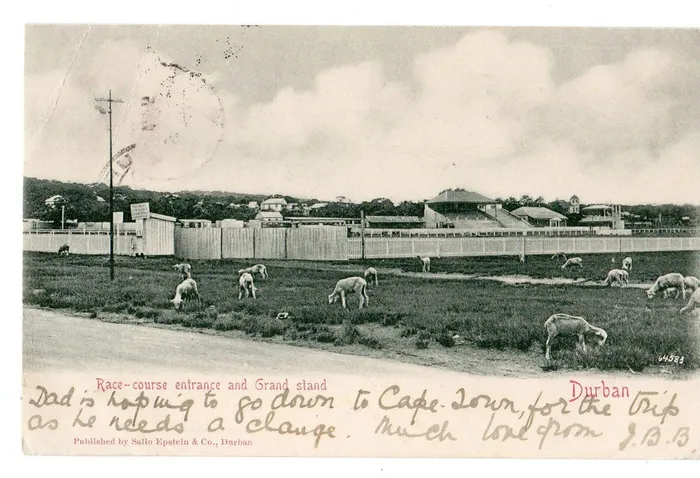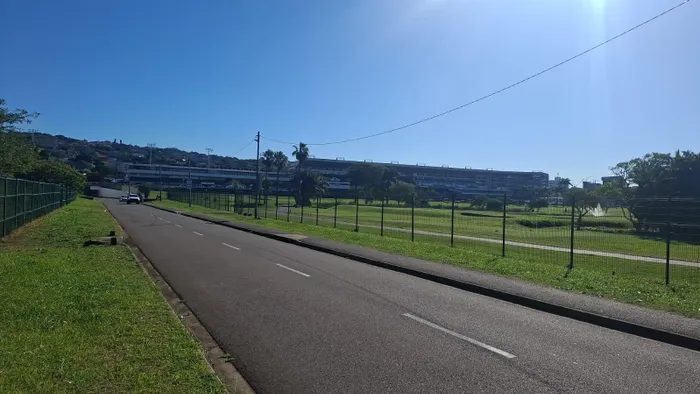From humble beginnings to Africa's biggest race
Then & Now

An early postcard of Durban's Greyville Race Course, with sheep grazing in the foreground.
Image: File
The postcard of old Durban this week suitably shows the very early days of Durban’s Greyville Race Course, the scene of the Durban July race today.
The modern picture shows what a major event the Durban July has become - a far cry from it’s first attendance of 3 000 people.
The history of Greyville dates as far back as 1844, when it hosted the province’s first official horse racing event. The 2 800m pear-shaped course surrounds the Royal Durban Golf Club's championship course.
The Hollywoodbets Durban July run at Greyville Racecourse is internationally acknowledged as Africa’s greatest horseracing event. It has been run without interruption every year since Saturday, July 17, 1897 when Campanajo crossed the line first from among seven runners in the Durban Turf Club Handicap over 1600m on the Western Vlei.
The initial distance of 1 mile (1600m) was modified several times until 1970 when it was changed to its current 2200 meters.
About 3 000 people attended that first day. Today a crowd of 50 000 plus is the norm.

The much developed scene today
Image: Leon Lestrade / Independent newspapers
The most famous of the July’s historic winners is no doubt the great Sea Cottage. The horse fell prey to a sniper’s bullet on his way to an early morning training session just a few weeks ahead of 1966 July. With the bullet lodged in his hind quarter, Sea Cottage ran the race of his life to finish fourth behind winning stable mate Java Head. A year later Sea Cottage came back to dead-heat with Jollify, to whom he was conceding an astonishing 12 kgs.
Only six horses have ever won the July twice, the most recent being the Justin Snaith-trained Do It Again in 2018 and 2019. Prior to that, the Geoff Woodruff inmate, El Picha, became the first horse in 50 years to achieve the double when winning in 1999 and 2000. The very talented London News won the 100th running of the “July”, before embarking on an ambitious International campaign which saw Alec Laird’s charge capture the QE 11 Cup at Shatin Racecourse in Hong Kong.
Fillies and Mares have found the winners’ enclosure on just 13 occasions over the 124-year history of the race. This century, the fairer sex have been represented by Ipi Tombe (2002), Dancer’s Daughter (2008) and Igugu (2011).
Anton Marcus leads the way as far as the jockeys are concerned with five victories to his name.
Bertie Hayden and Felix Coetzee rode three winners each while Richard Fourie also has three winners to his name.